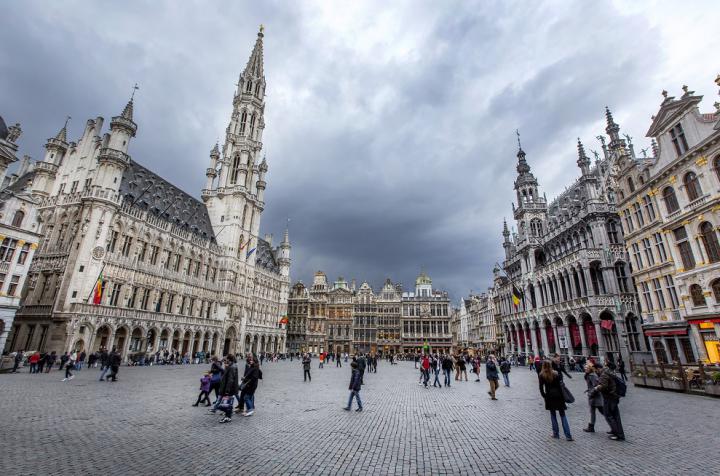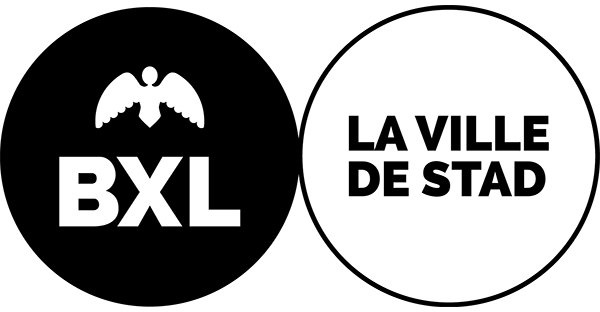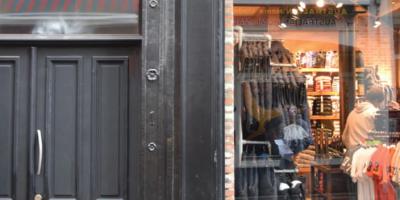UNESCO World Heritage
The Grand-Place of Brussels is listed on the UNESCO World Heritage List.
The World Heritage List is established by the External site UNESCO (United Nations Educational, Scientific and Cultural Organization), which is part of the United Nations (External site UNO).
An international agreement fixes the administrative and financial frame for the protection of the 'cultural and natural world heritage'. The list includes 'monuments and sites having an exceptional universal value from the point of view of the history, the art or the science, and natural monuments with an exceptional value from the aesthetic or scientific point of view'.
Since 1998, the Grand-Place is listed on the UNESCO World Heritage List. The square is recognized for its political, cultural and commercial value. The UNESCO based itself on 2 criterions to register the Grand-Place on the list of the World Heritage:
- Criterion II: The Grand-Place is an outstanding example of the eclectic and highly successful blending of architectural and artistic styles that characterizes the culture and society of this region.
- Criterion IV: Through the nature and quality of its architecture and of its outstanding quality as a public open space, the Grand-Place illustrates in an exceptional way the evolution and achievements of a highly successful mercantile city of northern Europe at the height of its prosperity.
Since 2009, the square and the surrounding streets of the square (UNESCO zone) are subjected to specific rules in town planning. In this way, the City of Brussels wants to keep a harmonious balance between conservation of the site, tourism, trade and housing.
- Municipal planning regulation UNESCO zone (PDF, 1.43 MB)
- Appendices of the municipal regulation (PDF, 4.42 MB)
- Map UNESCO zone Grand-Place (PDF, 259.34 KB)
The inscription of the Grand-Place on the World Heritage list involves a specific management of the site and the surrounding area, a requirement in the World Heritage Convention. In the guidelines of the UNESCO, the main objective of such management is being described as ensuring the sustainability of goods on the World Heritage List.
The City of Brussels worked out a methodology with all actions and projects around 5 strategic goals:
- management of the goods
- preservation of heritage which guarantees it as a whole and its authenticity
- development of a functional mix, in particular between housing and trade
- improving the living environment
- raising awareness, promotion, exchange and tourism development
The plan was developed in cooperation with the various departments of the City and other partners and organizations working within the zone. The next management plan will be valid for 6 years (2016-2022).
Management plan 2012-2015
- Management plan volume 1 (PDF, 10.52 MB) (in French)
- Management plan volume 2 (PDF, 9.40 MB) (in French)
- Management plan volume 3 (PDF, 36.48 MB) (in French)
Management plan 2016-2021
Management plan 2016-2021 (PDF, 6.09 MB)
Contact and information:
Dates and periods which marked the development of the Grand-Place of Brussels:
- 1174: first written mention of the 'Nedermarckt', the Grand-Place of Brussels occupies the place of a swamp dried up on the right bank of the Senne river
- 13th and 14th century: the square is surrounded by some stone patrician houses ('steenen')
- 15th century: construction in the course of the century of the wings of the City Hall, in 1449 construction of the bell tower of the City Hall
- 1515-1531: construction of the Maison du Roi (King's House or Broodhuis) on the Grand-Place
- 16th century: construction of the houses of the Grand-Place in Renaissance or Baroque style
- 13 till 15 August 1695: bombardment of Brussels by the troops of the Marshal de Villeroi on order of the French king Louis XIV, only some facades remain of which the Maison du Roi and the City Hall and its tower-belfry
- 1697-1698: reconstruction of the houses of the Grand-Place that had been destroyed in 1695
- 1873: beginning of the demolition and reconstruction of the Maison du Roi
More information:
A service of the City of Brussels is responsible for the accompaniment and raising awareness about the town planning regulation. This service coordinates all the initiatives and is the reference person for the contacts with the administration and the competent aldermans (Trade, Town planning and Tourism).
Function
- assure the accompaniment of the coming into force of the regulation: raising awareness, contact with the owners, shopkeepers, visitors, general information and forwarding towards the competent services
- contribute to the re-energization of this zone, by participating in the strategies of the City: follow-up committee,...
- lead the strategic works: town planning, commercial, patrimonial, tourist works,...
- participate in the Management committee, asked to manage the events on the Grand-Place
This work is made possible thanks to the support of the City Development Delegation (Urban Development Department).
- Municipal planning regulation UNESCO zone (PDF, 1.43 MB)
- Appendices of the municipal regulation (PDF, 4.42 MB)
- Map UNESCO zone Grand-Place (PDF, 259.34 KB)
Contact and additional information
- Unesco - World Heritage Convention - External site La Grand-Place, Brussels
- External site Organization of World Heritage Cities
SEE ALSO



